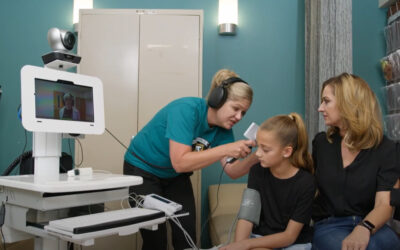Today, telemedicine is seeing increased use to solve a broad range of healthcare-related issues, such as reducing medical deserts in rural communities or increasing the effective range of a given clinic or practitioner. While it’s likely these applications will continue to drive the development and increased adoption of telemedicine in years to come, there are a number of other less conventional applications that can benefit greatly from these technologies as well.
Here are three examples to consider.
1. Space exploration
Believe it or not, NASA has had a fairly close relationship with the development of telemedicine technology and research for decades, so it only makes sense that the space agency would be one of the primary benefactors of further advances in this field. Today, that research is becoming even more important.
According to the official NASA website, the agency’s interest in telemedicine is being spurred on by increasing dedication to sustained-flight missions. In addition to the International Space Station, the possibility of missions to Mars or even to nearby asteroids would require extensive cooperation with telemedicine-equipped physicians. The agency indicated that its current focus is on integrating treatment with communication. In other words, in addition to letting astronauts in space communicate with physicians, telemedicine technology could facilitate the doctors’ treatment of patients remotely. Web-based encounter management portals provide an easy way to get real-time exams and communicate with physicians.
“Telemedicine has recently been introduced to some sports team franchises.”
2. Professional sports
Professional athletes are famous for two things: being exceptional at their sport and traveling all the time. Both of these can be significant factors in the amount and type of medical care needed by these high-impact professionals.
Telemedicine has recently been introduced to some sports team franchises to help bridge the gap in care athletes may experience when on the road. This is particularly important for athletes who may be injured and need to consult with a specialist regularly while still needing to travel with the team.
“The final results are still pending. But preliminarily, it looks as though our telemedicine evaluations are consistently in agreement with the assessments of team doctors on the sidelines,” Mayo Clinic Department of Neurology consultant Bert B. Vargas, M.D., said on the Mayo Clinic website.
3. Disaster relief
The U.S. has experienced its share of natural disasters in the past several years. Severe weather events like Hurricane Katrina in 2005 and Hurricane Ike in 2009, not to mention the countless tornadoes, thunderstorms and blizzards, can cause billions of dollars of damage. More importantly, they can leave thousands stranded and without access to healthcare.
According to a report from the University of Texas Medical Board, when Hurricane Ike hit Galveston, Texas, in 2009, some 2 million evacuees were left without access to medical care. In these instances, telemedicine-equipped relief workers could interact directly with healthcare providers in other states remotely. This type of emergency telemedicine could greatly improve the ability to provide evacuated citizens with emergency triage, preliminary clinical consultations and prescription replacements.
For more information on telemedicine encounter management technologies visit www.amdtelemedicine.com.




